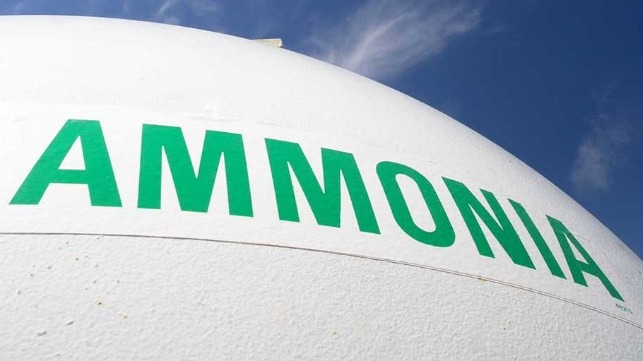Researchers Advocate for Regional Green Ammonia Production

Global shipping has been grappling with the conundrum of how to build the infrastructure required to decarbonize the industry. Researchers have now come up with a viable solution, suggesting that green ammonia could decarbonize 60 percent of global shipping when offered at just 10 regional fuel ports.d
In a new study, the University of Oxford researchers sought to resolve the ‘how and where’ uncertainties by providing two scenarios for the most cost-efficient global arrangements for green ammonia production and supply. The framework combines a fuel demand model, future trade scenarios and a spatial optimization model for production, storage and transport, to find the best locations to meet future demand. They hope to create greater clarity amongst investors on how the global system may look in the coming decades.
The international community is converging on green ammonia (ammonia produced using renewable energy only) as a likely candidate in the long-run in decarbonizing the shipping industry - not the only candidate, but an important part of the future fuel mix.
The study published in Environmental Research: Infrastructure and Sustainability, highlights that to ensure that green ammonia becomes a central fuel in decarbonizing shipping, massive resources are required. On a global scale, an estimated $1.9 trillion to $2.2 trillion will be required for investment in green ammonia facilities.
Out of the total investment needed, eight percent will be for demand-side (storage at importing port and maritime transport costs) while the remaining 92 percent is on the supply-side (production, electricity, pipelines and storage at exporting ports).
The winning formula in elevating green ammonia lies in creating strategic production hubs. In the current setup fueled by oil-producing nations, crude oil is often shipped very long distances for separation into HFO nearer to demand hubs.
For green ammonia, however, the study is calling for a more regionalized industry. In essence, this means green ammonia will be produced near the equator in countries with high solar potential and abundant land and shipped to regional centers of shipping fuel demand. The model optimizes for the global minimum delivered cost of green fuel.
According to the researchers, the greatest investment need, and opportunity, is in Australia, which is projected to become the main supplier for Asian markets. Large production clusters are also predicted in Chile to meet demand in South America, California to meet demand in the U.S, North-West Africa to meet European demand and southern Arabian Peninsula to meet local demand and parts of south Asia.
“The implications of this work are striking. Under the proposed model, current dependence upon oil-producing nations would be replaced by a more regionalized industry; green ammonia will be produced near the equator in countries with abundant land and high solar potential then transported to regional centers of shipping fuel demand,” said René Bañares-Alcántara, Professor of Chemical Engineering in the Department of Engineering Science at the University of Oxford.
Regionalized hubs have the ability to significantly increase production, which could reach up to 602 million metric tonnes per annum (MMTPA) under the MOD-AMB scenario and 750 MMTPA under the HIGH-AMB scenario. This is equivalent to a three to four-fold increase of present-day production of fossil fuel-based ammonia.
The study shows large demand is predicted for prominent countries that depend on long-distance maritime transport including the U.S, Singapore, Japan, South-Korea, China, Brazil, India, Australia, South Africa and Malaysia. These top 10 countries consume the majority of the global green ammonia supply in the new study's most ambitious scenarios.
The global shipping fleet currently runs predominantly on cheap, energy-dense HFO, which is responsible for about three percent of global greenhouse gases emissions.
